Finally, our 6MM ARC full review and hunt report from a varmint hunter’s perspective. We know it’s a great cartridge for long-range target shooting and even medium sized game. Is it good for varmint and predator hunting? Are the currently available factory loads enough to cover the needs of those who shoot everything from colony varmints to coyotes? What about reloading components, what’s up with that? Here are my thoughts on the Hornady 6mm ARC cartridge and currently available ammunition.
The 6mm ARC Cartridge:
Released in 2020, the 6mm ARC was Hornady’s answer to the growing popularity of high ballistic coefficient ammunition for the AR15 platform. In their press releases, they touted the capabilities of this cartridge and claimed it outperformed almost every other offering in the same class.
“…The versatile 6mm ARC does much of what larger cartridges can and everything that smaller cartridges can’t. Designed to meet the needs of the world’s toughest critics, the 6mm ARC utilizes efficient, high-BC bullets to deliver unprecedented performance from the AR-15 platform. Commercial 6mm ARC offerings will feature bullets selected to deliver ideal performance for hunting, match shooting and personal protection applications.”
Let’s be frank, the 6mm ARC was not specifically designed for hunters. Instead, like most other new cartridges, the 6mm ARC was designed for long-range target and competition shooting. Like most of the new cartridges that have been released in the past decade, hunters have adopted these cartridges, adjusted the components and turned them into their own. Initially, Hornady offered only the 108 grain ELD-M (match bullet) and the 105 grain HPBT projectiles in their factory ammunition. Approximately six months after the release of the cartridge in 2020, Hornady released their Hunter ammunition loaded with a 103 grain ELD-X projectile. Although this was a step in the right direction for medium game hunters, it still left Varminters out of options for factory ammunition. With the complete lack of raw brass for handloading, the only choice was to purchase loaded factory ammunition and shoot it, or pull the bullets, in order to get loadable brass. This is what we ended up doing, but more on that later.
Comparing the 6mm ARC to some of the cartridges we here at Varminter Magazine shoot, it did eclipse some of them with the improved performance. Notably, the .224 Valkyrie, shooting heavier projectiles, fell short of the ARC by about 300 feet per second. However, when you take a look at load data for lighter, varmint style projectiles, the difference is only around 134 fps. The ballistics gap widens once you start pushing heavier projectiles in the 6mm ARC past 300-400 yards. Others, including the .22 Nosler and the .223 Remington also fell short. However, the difference is not enough to warrant tossing the other cartridges into the trash heap, because most varmints won’t know the difference.
The 6mm ARC – Montana Antelope Hunt:
A few months after the 6mm ARC was released, I happened to be speaking with Alex at Founding Fathers Armory here in the Nampa, Idaho area. He had built out a 6mm ARC AR15 on one of his upper/lower sets and had been testing it with the Hornady Black and Match ammunition. I knew I would be taking my .224 Valkyrie to Montana, but I offered to take his 6mm ARC on the trip as well. I had two tags. One for a buck, the other for a doe Antelope. I dropped a Vortex Viper 6-24x50mm on top and sighted-in with the only ammo I could lay my hands on, the Hornady Black loaded with a 105 grain BTHP. I got good results at the range and the Founding Fathers AR15 functioned flawlessly.
After arriving in Montana, my buddy and I found a large group of Antelope that were working a plot of public land that covered a few miles in every direction. After spotting and working our way to one large group, we crested the hill near where we last saw them and they were gone! Scanning behind us, we saw them meandering about 800 yards behind us, next to our trucks!! We quickly headed that way and my buddy was able to take out a decent sized buck with his bolt-action 6.5 Creedmoor. Now it was my turn. As luck would have it, while driving out of the area, a large herd of Antelope crossed the road in front of us. I jumped out, grabbed the 6ARC and my monopod, then headed in a direction where I could cut them off. I sat down and watched through my scope as Antelope, after Antelope, crossed a hillside about 90 yards away. Finally, I saw a buck. I put the crosshairs on his chest and panned left as he trotted along. When I squeezed the trigger, the Antelope dropped. I hit a little back, so I immediately put one more into his chest to put him down for good. The 105 grain BTHP did the job and I had a nice buck Antelope on the ground!
While cleaning him, I realized that the first shot was lethal, but the bullet had blown up on a high rib bone and not penetrated enough for a quick kill. The second bullet also blew-up on a rib bone, but the Antelope was already close to death. I was not impressed with the 105 BTHP as a hunting bullet. It did not hold together enough to effectively break through the bone and enter the vitals. This has nothing to do with the 6mm ARC cartridge. It was clearly a projectile issue, but was the only one available at the time of the hunt.
The 6mm ARC – The Varminter AR15 Build:
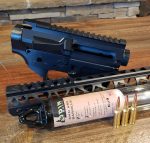 Once back from Montana, I felt that the 6mm ARC was something we would take a long look at. That meant building our own AR15 for testing and hunting. We copied the rifle that Founding Fathers leant me almost exactly. The only difference was using a Freedom Flag AR15 upper/lower set that I had on hand. Otherwise, it had the same Odin Works barrel/BCG/handguard, etc. I own many Odin Works barrels and have always been pleased with their accuracy. The 18″ 6mm ARC barrel was no different.
Once back from Montana, I felt that the 6mm ARC was something we would take a long look at. That meant building our own AR15 for testing and hunting. We copied the rifle that Founding Fathers leant me almost exactly. The only difference was using a Freedom Flag AR15 upper/lower set that I had on hand. Otherwise, it had the same Odin Works barrel/BCG/handguard, etc. I own many Odin Works barrels and have always been pleased with their accuracy. The 18″ 6mm ARC barrel was no different.
AR15 Build Information:
- Odin Works – 18″ Stainless Barrel
- Odin Works Tunable Gas Block
- Odin Works R2 17.5 inch Handguard
- Odin Works 6.5 Grendel Type II bolt – BCG
- Adaptive Tactical Stock (very comfortable and easy to manipulate) –
- Odin works Gas Tube
- Aero Precision Upper Parts Kit
- Aero Precision Charging Handle
For those who don’t know, the 6mm ARC is based off of the 6.5 Grendel cartridge, so any AR15 bolts and magazines used for the 6 ARC are compatible.
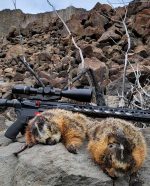 The optic I chose was the tried and true, Burris Fullfield E1 6.5×20-50mm. The E1 reticle is my favorite for varmint hunting and I own a dozen of these riflescopes that sit on various rifles. The FF-E1 is an excellent, affordable scope, that is perfect for what we do. My only wish is for a parallax down to 20 yards, or so.
The optic I chose was the tried and true, Burris Fullfield E1 6.5×20-50mm. The E1 reticle is my favorite for varmint hunting and I own a dozen of these riflescopes that sit on various rifles. The FF-E1 is an excellent, affordable scope, that is perfect for what we do. My only wish is for a parallax down to 20 yards, or so.
The 6mm ARC – Coyote Hunting in Idaho:
The first hunt test of the Hornady 6mm ARC was going to take place here in Southern Idaho, with Cache using the rifle/ammo for nighttime, thermal coyote hunting. He started out using the 105 grain BTHP in the Hornady Black factory ammunition. Unfortunately, the projectile did not perform well on a number of Coyotes that were hit hard, dropped, but still ran off. The difficulty with night hunting is that you don’t always have the opportunity to track the predator after the shot. This is why using the correct projectile for the job is important. After losing these coyotes, Cache decided it would be best if he pulled the bullets from the factory ammo, so he could use the brass to load a 70 grain Nosler Ballistic Tip. I go over the steps in the video, but deconstruction the ammunition gave us some insight on the way Hornady is building this ammo. Cache saw that the powder was extremely compressed in the factory loads. So much so, that he had to breakup the compressed powder just to get it out of the case. Now, lots of folks shoot compressed loads, so it’s nothing new. However, you must always be aware that in the hot months of the year, pressure can build in compressed cartridges and cause issues. With brass being so hard to get, having an expanded primer pocket, or damage to the rim from the ejector, can really hurt.
“Cache’s new Coyote/Varmint load was also extremely compressed, but even at the chronographed velocity of 3230 feet per second, the brass showed no signs of pressure. That’s a nice jump in velocity compared to the heavier projectiles.”
Cache’s new Coyote/Varmint load was also extremely compressed, but even at the chronographed velocity of 3230 feet per second, the brass showed no signs of pressure. That’s a nice jump in velocity compared to the heavier projectiles. This allowed for better performance on Coyotes and Cache’s retrieval rate shot up to 100%. There is an example in the video of a close-up, not ideal shot, where the Coyote still died quickly. If Hornady offered their 75 grain VMax in factory 6mm ARC ammo, it would be a gamechanger for predator callers and varmint hunters who shoot factory ammunition. Understanding that some of the barrel twist rates in the wild are not ideal for the 75 grain VMax, it would still give a huge boost to varmint hunters who want to embrace the 6mm ARC. More on this later.
The 6mm ARC – Prairie Dog Hunting in Wyoming:
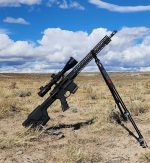 A little over a month ago (end of September/early October) I met up with Noor from @TheDollarSportsman for a Prairie Dog hunt in Wyoming. He was bringing a new left-handed Stag Arms Covenant AR15 chambered in the 6mm ARC. I had a couple of Stag rifles with me, but my main shooter would be the Stag 15 in chambered in .224 Valkyrie. Since these two cartridges are often compared, we decided to have a friendly contest based on who would make the longest shot on a Prairie Dog using their rifle/ammo combo. When people say that shooting in the wind is easy, the first question that comes to mind is, “Have you ever hunted Prairie Dogs in Wyoming?”. This blowing, swirling wind was our number one nemesis during our hunt. Making the longer shots difficult to call and adjust for. Noor was shooting the Hornady 105 BTHP Black ammunition, while I was using a much lighter projectile in some Sierra Prairie Enemy ammunition loaded with a 69 grain Blitzking.
A little over a month ago (end of September/early October) I met up with Noor from @TheDollarSportsman for a Prairie Dog hunt in Wyoming. He was bringing a new left-handed Stag Arms Covenant AR15 chambered in the 6mm ARC. I had a couple of Stag rifles with me, but my main shooter would be the Stag 15 in chambered in .224 Valkyrie. Since these two cartridges are often compared, we decided to have a friendly contest based on who would make the longest shot on a Prairie Dog using their rifle/ammo combo. When people say that shooting in the wind is easy, the first question that comes to mind is, “Have you ever hunted Prairie Dogs in Wyoming?”. This blowing, swirling wind was our number one nemesis during our hunt. Making the longer shots difficult to call and adjust for. Noor was shooting the Hornady 105 BTHP Black ammunition, while I was using a much lighter projectile in some Sierra Prairie Enemy ammunition loaded with a 69 grain Blitzking.
The 6mm ARC did an excellent job of bucking the wind. The heavier, better B.C. 105 grain projectile needed considerably less hold than the much lighter 69 grain projectile I was using. Correcting for windage was a full-time job for me every time I shot. But there were numerous times when Noor held for wind, only to have to remove the correction and hold dead on for the hit. This was a huge advantage to the guy shooting the 6mm ARC and that wasn’t me! The Prairie Dog he killed at 464 yards, in stiff wind, showed the big difference between the two cartridges. If you want to see who won the “contest”, head over to Noor’s channel and check out the video: https://www.youtube.com/watch?v=9xvDUJpKf5o
 The only downside to the 6mm ARC and the Hornady 105 grain BTHP Black ammo was the tendency for the bullet to smack the Prairie Dog hard, but not blow it up like a traditional varmint projectile would have. Thankfully, we had one of the Prairie Dog Retrieval Tools that I starting making after my buddy gave me one years ago. Noor and I pulled many stone dead Prairie Dogs from deep within their holes. The shots were lethal (see the chest shot in the video), but the projectile lacked the ability to blow-up on impact. This was remedied on the last day of the hunt, when Noor started using the Hornady 103 grain ELD-X Hunter ammunition, which we chronographed at 2498 feet per second. We saw a big difference in performance on the Prairie Dogs, with actual blow-ups on the body, equating to quick kills. Again, because Noor does not currently handload, factory ammunition, loaded with a varmint style projectile, would have been extremely beneficial on this hunt. The 75 grain VMax may have not performed as well in the Wyoming wind, but their 87 grain VMax would have been perfect.
The only downside to the 6mm ARC and the Hornady 105 grain BTHP Black ammo was the tendency for the bullet to smack the Prairie Dog hard, but not blow it up like a traditional varmint projectile would have. Thankfully, we had one of the Prairie Dog Retrieval Tools that I starting making after my buddy gave me one years ago. Noor and I pulled many stone dead Prairie Dogs from deep within their holes. The shots were lethal (see the chest shot in the video), but the projectile lacked the ability to blow-up on impact. This was remedied on the last day of the hunt, when Noor started using the Hornady 103 grain ELD-X Hunter ammunition, which we chronographed at 2498 feet per second. We saw a big difference in performance on the Prairie Dogs, with actual blow-ups on the body, equating to quick kills. Again, because Noor does not currently handload, factory ammunition, loaded with a varmint style projectile, would have been extremely beneficial on this hunt. The 75 grain VMax may have not performed as well in the Wyoming wind, but their 87 grain VMax would have been perfect.
As we wrapped up our time in Wyoming, I found that the data didn’t lie, the 6mm ARC was definitely living up to it’s hype.
The 6mm ARC – Rockchuck Hunting in Idaho:
Earlier in the year, long before the Wyoming Prairie Dog hunt, Cache and I headed up to the mountains of Southern Idaho to put the 6mm ARC to test on some longer range varmints. Rockchucks were our main target and the area we hunted had plenty to hunt. Cache was still shooting the handloaded 70 grain Nosler ammunition and I was running the camera. As you can see in the video, the 70 grain NBT was very effective on the rockchucks we shot. The 3230fps coupled with a varmint style projectile, really was an effective combo at all ranges we shot that day.
The 6mm ARC – Final Thoughts:
The Hornady 6mm ARC cartridge is a great cartridge for varmint hunting, with some caveats. Unless Hornady starts to offer a factory varmint hunting ammunition option, it will continue to have a lukewarm following in the varmint hunting community. Varmint hunters are typically handloaders, but the lack of factory 6mm ARC brass in the market is a big hurdle for folks looking to get into this cartridge. Two things need to happen in order for the 6mm ARC to really be embraced by us Varminters. Number one has been repeated through-out this review. Factory ammunition loaded with a 75 grain VMax and a 87 grain VMax. Since they are so close in weight, I’d be okay with just an 87 grain VMax offering. We are hoping that the shorter case is not the reason behind the lack of a varmint ammunition offering. Second, Hornady needs to start selling raw brass again. They cannot just trickle it out. There needs to be plenty of supply, at an affordable price, so shooters/hunters can start stocking up and handloading. A typical ground squirrel and rockchuck season, means I am shooting close to 2000 rounds of ammunition. If I’m predator hunting, I don’t need much more than 100 rounds. But, its always nice to have more, or know that it will be available at some point if I need to replenish what I lose in the dark, or on the stand. With the advent of PRS and other competition shooting, many companies have abandoned their original mission and focused on the latest and greatest. Though-out this most recent “shortage”, Hornady has done well keeping shelves stocked with projectiles used by varmint hunters. Beyond good business, I believe this is also due to Hornady owing a lot of their success to the varmint hunting crowd. This is one more cartridge where Hornady has the opportunity to impress the market again and offer a varmint hunting load. Federal does it with the .224 Valkyrie (60 grain NBT). Nosler continues to do so with their .22 Nosler. The only small caliber cartridge released in the recent past that has not offered up a factory varmint option is Hornady. With ammunition becoming available again and orders probably slowing down, I hope Hornady takes a hard look at our needs and releases a new option that fills our needs.
“Two things need to happen in order for the 6mm ARC to really be embraced by us Varminters. Number one has been repeated through-out this review. Factory ammunition loaded with a 75 grain VMax and a 87 grain VMax. Since they are so close in weight, I’d be okay with just an 87 grain VMax offering. We are hoping that the shorter case is not the reason behind the lack of a varmint ammunition offering. Second, Hornady needs to start selling raw brass again.”
- Podcast with Soul Seekers Nation From the 2025 SHOT Show - February 17, 2025
- Complete Overview of the .17-5.56 KAK Cartridge by KAK Industry - July 21, 2024
- AGM Global Announces New and Upgraded Optics at the 2024 SHOT Show - February 1, 2024

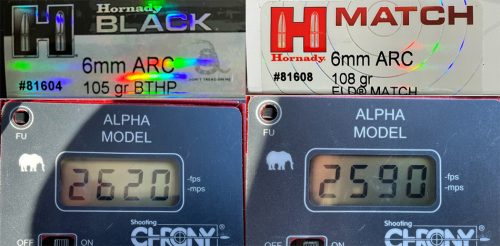
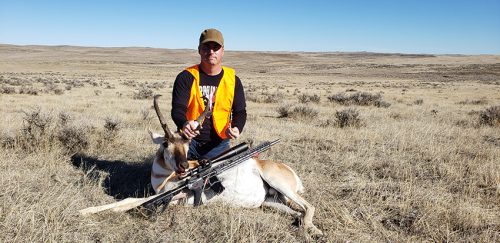
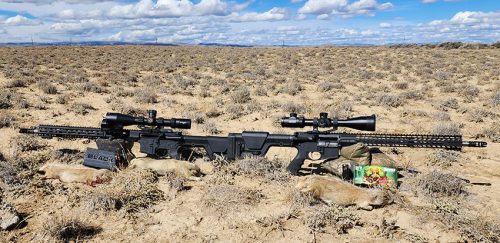
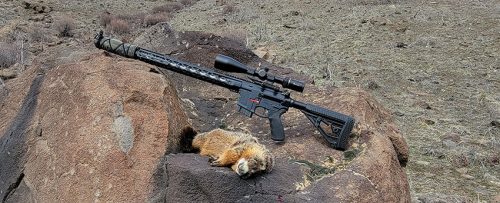
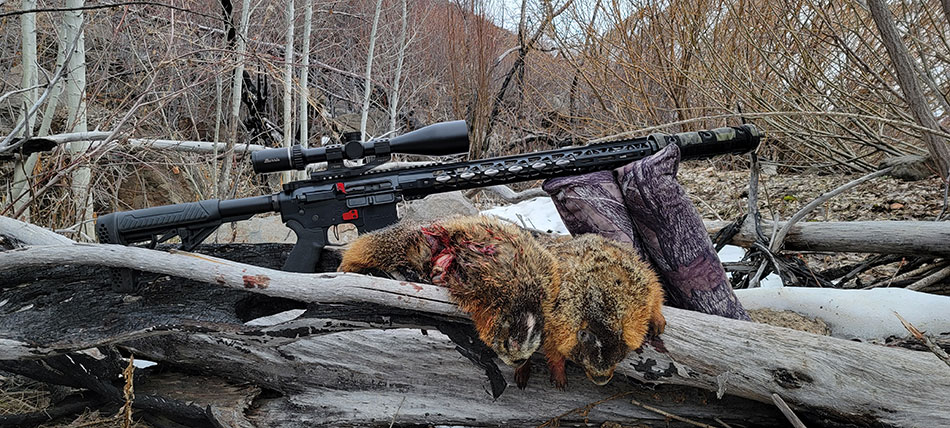

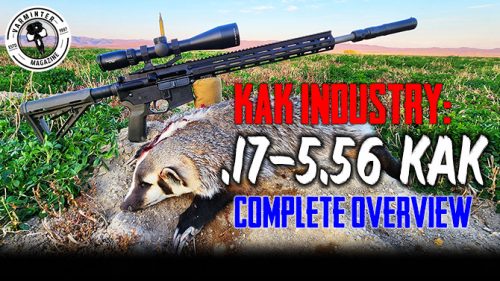
Leave a Reply
You must be logged in to post a comment